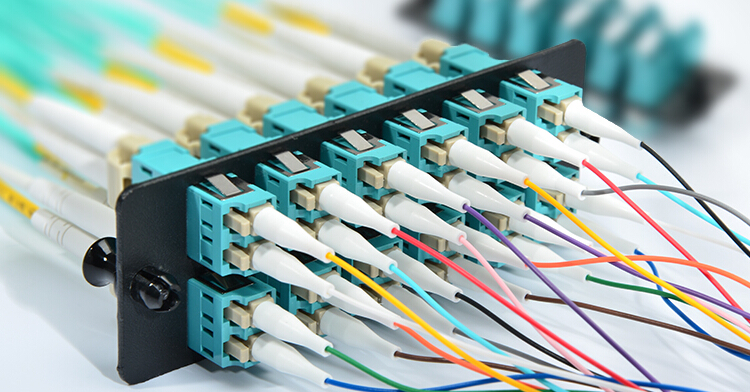- English
- German
- French
- Spanish
- Japanese
- Italian
- Chinese
- Chinese (traditional)
- Home
- Blog
- Case Study
- Knowledge Center
- Glossary
- Story
- Video
- Blog Type
- Product
- Topic
- Region
Hot Search
- Product Updates
- Share FS
- PoE Switch
- Networking
- Networking Devices
- Home
- Blog
- Case Study
- Knowledge Center
- Glossary
- Story
- Video
-
- Home
- Blog
- Case Study
- Knowledge Center
- Glossary
- Story
- Video
- Blog Type
- Product
- Topic
- Region
- Home
- Blog
- Case Study
- Knowledge Center
- Glossary
- Story
- Video
- English
Hot Search
- Product Updates
- Share FS
- PoE Switch
- Networking
- Networking Devices
Fiber Optic Pigtail: What Is It and How to Classify It?
In fiber optic cable installation, how cables are attached to the system is vital to the success of network. If done properly, optical signals would pass through the link with low attenuation and little return loss. Fiber optic pigtail offers an optimal way to joint optical fiber, which is used in 99% of single-mode applications. This post contains some basic knowledge of fiber optic pigtail, including pigtail connector types, fiber pigtail classifications.
Fiber Pigtail Specification
Fiber optic pigtail is a fiber optic cable terminated with a factory-installed connector on one end, leaving the other end terminated. Hence the connector side can be linked to equipment and the other side melted with optical fiber cables. Pigtail patch cords are utilized to terminate fiber optic cables via fusion or mechanical splicing. High-quality pigtail cables, coupled with correct fusion splicing practices offer the best performance possible for fiber optic cable terminations. Fiber optic pigtails are usually found in fiber optic management equipment like ODF, fiber terminal box and distribution box.

Fiber Optic Pigtail Types
Fiber optic pigtails are available in various types: Grouped by pigtail connector type, there are LC fiber optic pigtails, SC fiber pigtails and ST fiber pigtails, etc. By fiber type, there are single-mode fiber optic pigtail and multimode fiber optic pigtail. And by fiber count, 6 fibers, 12 fibers optic pigtails can be found in the market.
By Fiber Type
Fiber optic pigtails can be divided into single-mode (colored yellow) and multimode (colored orange) fiber. Multimode fiber optic pigtails use 62.5/125 micron or 50/125 micron bulk multimode fiber cables and terminated them with multimode fiber optic connectors at one end. 10G multimode fiber cables (OM3 or OM4) are also available in pigtails. The jacket color of 10G OM3 and OM4 fiber optic pigtail is usually aqua. Single-mode fiber pigtail cables use 9/125 micron single-mode fiber cable and terminate with single-mode fiber connectors at one end.
By Connector Type
According to different types of pigtail cable connector terminated at the end, there are LC fiber pigtail, SC fiber pigtail, ST fiber pigtail, FC fiber pigtail, MT-RJ fiber pigtail, E2000 fiber pigtail and so on. With different structures and appearance, each of them has their own advantages in different applications and systems. Let’s go through some widely used ones.
SC Fiber Pigtail: SC pigtail cable connector is a non-optical disconnect connector with a 2.5mm pre-radiused zirconia or stainless alloy ferrule. SC fiber pigtail is economical for use in applications such as CATV, LAN, WAN, test and measurement.
FC Fiber Pigtail: FC fiber pigtail takes the advantage of the metallic body of FC optical connectors, featuring the screw type structure and high precision ceramic ferrules. FC pigtail patch cords and its related products are widely applied for general applications.
ST Fiber Pigtail: ST pigtail connector is the most popular connector for multimode fiber optic LAN applications. It has a long 2.5mm diameter ferrule made of ceramic (zirconia), stainless alloy or plastic. Hence SC fiber pigtails are commonly seen in telecommunications, industry, medical and sensor fields.
Like fiber optic patch cords, fiber optic pigtails can be divided into UPC and APC versions. Most commonly used types are SC/APC pigtail, FC/APC pigtail and MU/UPC pigtail.

By Application Environment
Some pigtail cables are specially installed to withstand the harsh or extreme environments, so here comes armored fiber pigtail and waterproof fiber pigtail.
Armored Pigtail: enclosed with stainless steel tube or other strong steel inside the outer jacket, armored fiber optic pigtails provide extra protection for the fiber inside and added reliability for the network, while reducing the unnecessary damage caused by rodents, construction work, weight of other cables.
Waterproof Pigtail: designed with a stainless steel strengthened waterproof unit and armored outdoor PE (Poly Ethylene) jacket, waterproof fiber pigtail is a great fit in harsh environments, like communication towers, CATV and military. Waterproof pigtail cable boosts good toughness, tensile and reliable performance, facilitating the use of outdoor connections.
By Fiber Count
Fiber optic pigtails could have 1, 2, 4, 6, 8, 12, 24 and 48 strand fiber counts. Simplex fiber optic pigtail has one fiber and a connector on one end. Duplex fiber optic pigtail has two fibers and two connectors on one end. Each fiber is marked “A” or “B” or different colored connector boots are used to mark polarity. Similarly, 4, 6, 8, 12, 24, 48 and more than 48 fibers optical pigtails have their corresponding feature.

Note: Fiber pigtails have female or male connectors. Female connectors could be mounted in a patch panel. And they also have male connectors that plugged directly into an optical transceiver.
FS.com Fiber Pigtail Solution
FS.com supplies a broad range of factory terminated and tested fiber pigtail assembly—made with 900µm buffered fiber optic cables and PVC jacket, these pigtail assemblies are available in various fiber types, cable constructions and connector options. We have various types of pigtail patch cord including standard 900µm buffered fiber optic pigtails, 6 fibers to 24 fibers color-coded fiber optic pigtail, armored pigtails and waterproof pigtails, etc. All our fiber pigtail assembly are 100% tested to ensure excellence in performance, intermateability and durability. You can also customise your pigtail patch cord based on your specific needs. Large stock of cable and connectors enables a fast turnaround of custom assemblies.
Conclusion
Fiber optic pigtails are basically used to splice with the fiber so that they can be connected to the patch panel or equipment. They also present a feasible and reliable solution for easier fiber termination, effectively saving operating time and labour cost. Why not pick up your fiber pigtail assembly with FS.com?
Related Article: What Kind of Fiber Patch Cord Should I Choose?
You might be interested in




Email Address

-
PoE vs PoE+ vs PoE++ Switch: How to Choose?
May 30, 2024


























































